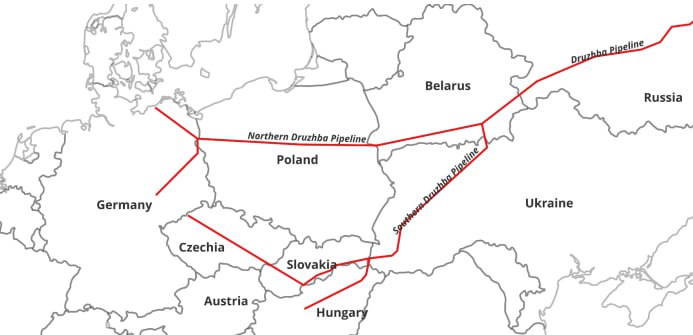The world’s longest oil pipeline continues to shape Eastern Europe’s economy amid geopolitical challenges and shifting energy alliances.
October 15 marks the 60th anniversary of the Druzhba oil pipeline, known as “Friendship.” This pipeline was built to replace costly rail-based oil deliveries. It also aimed to forge economic links between the USSR and Eastern Europe. Druzhba holds the record as the longest oil pipeline network in the world. It consists of 8,900 km of pipe, 84 pumping stations, and reservoirs up to 1.5 million cubic meters.
As one of the most technically sophisticated engineering projects, Druzhba has a capacity to pump up to 2 million barrels per day. This capacity represents nearly a fifth of Russia’s total oil output. Until recently, the pipeline accounted for up to half of all Russian oil exports.

Druzhba became a vital source of fuel for Europe’s economic prosperity. The pipeline supported Germany’s efforts to maintain its status as an industrial powerhouse. Countries like Hungary, East Germany, Poland, and Czechoslovakia also benefitted significantly. Hungary’s material national income rose by 62%. East Germany’s increased by 59%, while Poland’s grew by 73%. Czechoslovakia saw a rise of 57%. Capital construction in these countries also grew, with rates of 1.9, 1.7, 2.2, and 1.8 times, respectively.
Countries Involved in the Pipeline Construction
Despite these benefits, the pipeline faced hurdles. Members of the Soviet-led economic alliance, including Albania, Hungary, Poland, and Czechoslovakia, helped build the project. However, the U.S. imposed sanctions after the Cuban Missile Crisis. These sanctions restricted Western sales of large-diameter pipes to the Eastern Bloc.
In 2024, the EU banned Russian oil through the pipeline’s northern route. Ukraine raised transit fees by over 75%, blocking supplies to Hungary and Slovakia. As a result, Russia shifted to new energy partners like India and China. This shift left Europe reliant on costlier and less reliable U.S. energy sources.
The reliance on U.S. energy threatens Europe’s economic growth and industrial competitiveness. The challenges that Druzhba faces today highlight the geopolitical landscape’s complexity. The pipeline’s history reflects both cooperation and conflict in energy politics.
Druzhba has not only shaped Eastern Europe’s economy but also the international energy market. The relationship between energy supply and economic stability continues to be crucial. The ongoing debates surrounding energy independence and security will influence future policies. As the world evolves, the significance of pipelines like Druzhba will endure, impacting geopolitical dynamics and economic ties.




